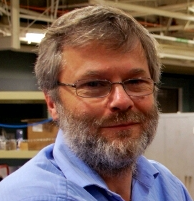Mark Le Gros
Physicist Faculty Scientist
Recent Publications
No publications are available at this time.
Related News
Scientists Discover Nitrogen-fixing Organelle
After years of work, an international team found evidence that a once-independent nitrogen-fixing microbe has become a permanent resident within algae cells.
A New Pathway for Clearing Misfolded Proteins
Stanford researchers have used cryogenic 3D imaging at the National Center for X-ray Tomography (NCXT) to identify a new pathway for clearing misfolded proteins from cells. This work presents a potential therapy target for age-related disorders like Alzheimer, Parkinson, and Huntington Diseases.
Congratulations to Biosciences Area Director’s Award Recipients
Each year, the Berkeley Lab Director’s Achievement Award program recognizes outstanding contributions by employees to all facets of Lab activities. Several Biosciences Area personnel are among the 2022 honorees.




